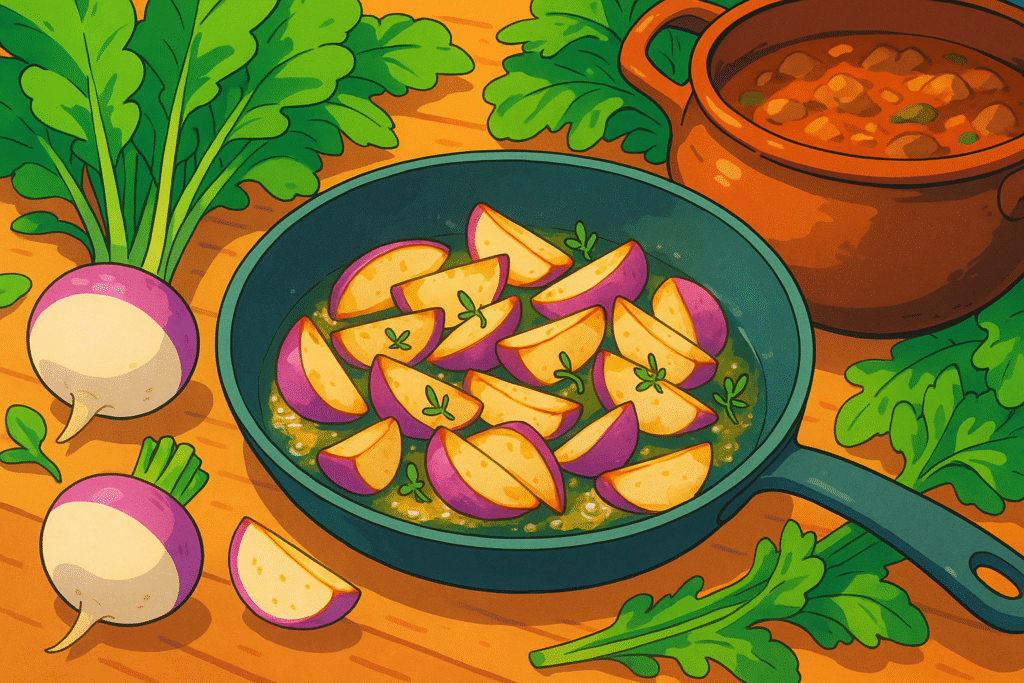Turnip (Brassica rapa subsp. rapa)

About Turnip
Turnips are root vegetables with white flesh and a slightly spicy, earthy flavor. Young turnips are sweet and crisp, while older ones become more pungent.
Their greens are also edible — peppery, nutrient-rich, and ideal for sautéing or soups.
The History of Turnip
Turnips have been cultivated since prehistoric times in Eurasia. They were a major food source in ancient Rome and medieval Europe, long before potatoes arrived.
In Japan, they’re known as kabu and used in pickles and stews. In Scotland, they’re the original “neeps” served with haggis.
The Science of Turnip
Turnips contain vitamin C, fiber, and glucosinolates, which contribute to their pungency and may support detoxification.
They’re low in calories, hydrating, and easy to digest when cooked.
The Geography of Turnip
Turnips thrive in cool climates with well-drained soil. They’re grown widely across Europe, Asia, and North America.
They’re harvested young for sweetness or allowed to mature for use in mashes, soups, and roasting.
Varieties of Turnip
Purple Top White Globe
Most common type. Sweet when young, robust when mature.
Hakurei
Japanese salad turnip. Small, white, and sweet enough to eat raw.
Golden Ball
Yellow-fleshed with rich, buttery flavor. Great roasted.
Tokyo Cross
Hybrid variety — fast growing and tender.
Snowball
Pure white with smooth skin. Milder and ideal for steaming.
FAQs All your questions about Turnip: answered
Do you need to peel turnips?
Young ones — no. Older turnips have tougher skin and benefit from peeling.
Are turnip greens edible?
Yes — they’re peppery and packed with nutrients. Cook like collard greens or spinach.
Why do some turnips taste bitter?
Bitterness can increase with size and age. Cooking or pairing with fats helps mellow the flavor.
Can turnips be eaten raw?
Absolutely. Thinly sliced or grated, they’re crunchy and refreshing.